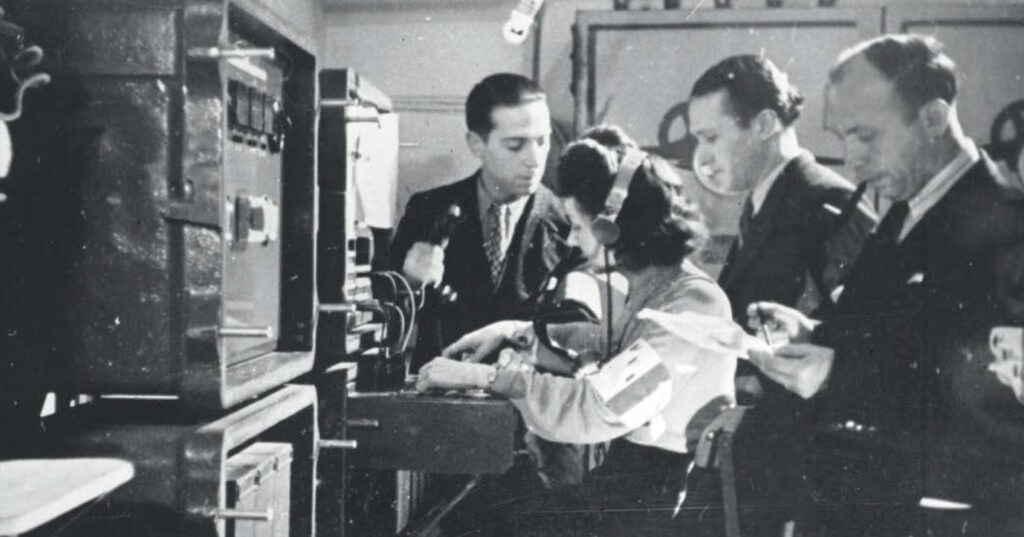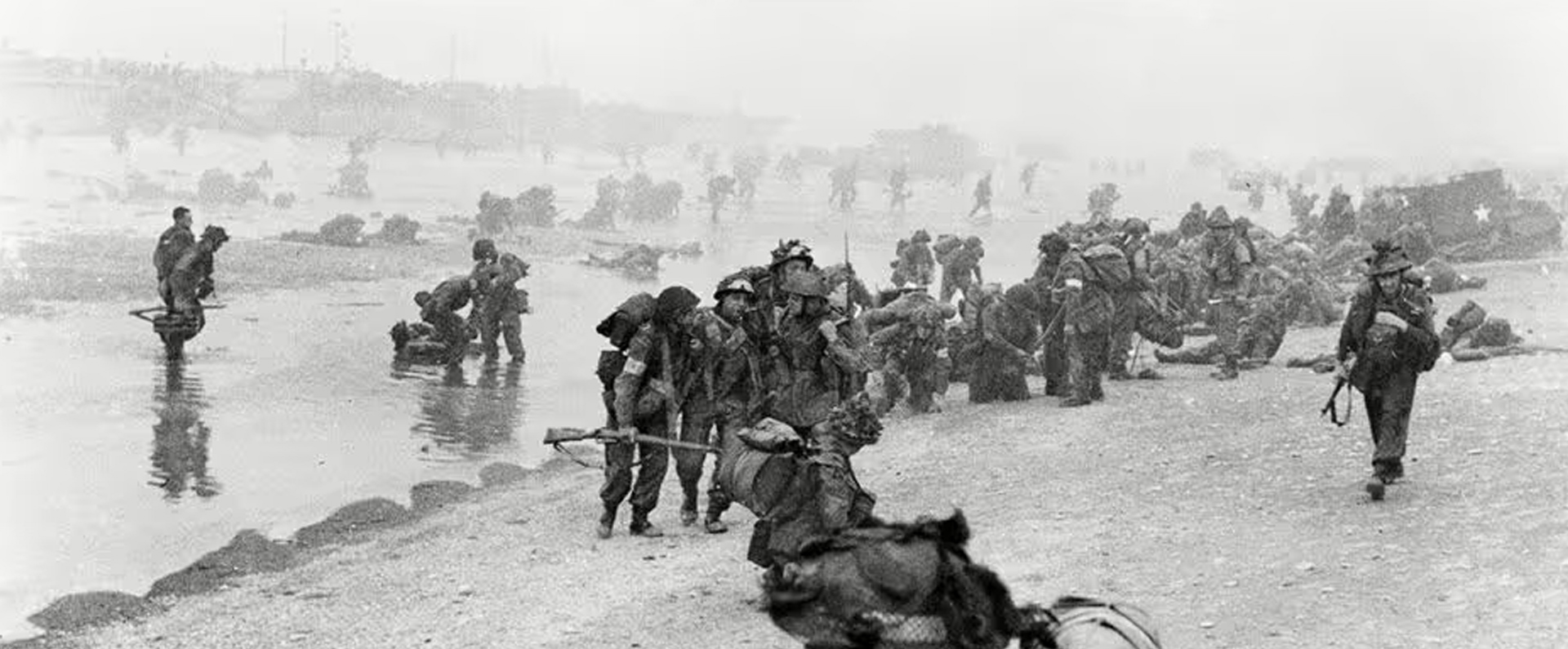
Published in Britain at War in December 2020.
Assistant Section Officer Noor Inayat Khan GC
The George Cross has just celebrated the 80th anniversary of its creation and my affection for the decoration is immense. It is Britain and the Commonwealth’s most prestigious decoration for bravery not in the face of the enemy and its relevance is as great today as when it was instigated by George VI in 1940 during The Blitz.
Noor Inayat Khan, known to so many simply by her code name “Madeleine”, was the first woman secret agent to be infiltrated into enemy occupied France during the Second World War. Born in Moscow on New Year’s Day 1914, she was the eldest of four children. She came from a truly international family. Her father, who was Indian, had travelled to America in 1910. He had originally intended to stay only a short time but did not return to his homeland for another sixteen years. He met his American wife when she attended his talk on Indian mysticism and they married on 20 March 1913.
Stays in London, Paris and Moscow followed, hence young Noor’s birthplace. However, the couple returned to London with their six-month-old daughter in July 1914, as the international situation deteriorated and the likelihood of a war in Europe increased. When the First World War ended, the family moved to France. After Inayat Khan’s father died in 1927 from pneumonia, aged 44, her mother remained grief-stricken for a long time and she, as the eldest child, became the unofficial head of the family despite being only 13.
Inayat Khan was educated at the Lycée de St Cloud from 1925 to 1931. This was followed by the Sorbonne from 1932 and Ecole des Langues Orientales from 1937 to 1939. Inayat Khan was a talented author and she wrote children’s books and plays. From 1939 to 1940 she, along with her younger sister, joined the nursing volunteers Union des Femmes de France. As the Germans invaded, she worked in hospitals but her family eventually escaped to England, where they were determined to play a role in the war effort.
Aged 25, Inayat Khan joined the Women’s Auxiliary Air Force (WAAF). She became a skilled wireless operator and on 1 December 1942 became a leading aircraftwoman. As a fluent French speaker – as well as a wireless operator – she was soon being considered for the secretive Special Operations Executive (SOE), which had been formed in the summer of 1940 after the fall of France.
She eventually joined the SOE on 8 February 1943, and four days later was seconded from the WAAF to the Women’s Transport Service (“FANY”). In the event, Assistant Section Officer Inayat Khan’s training was rushed – there was work to be done in France – and she was dropped by Lysander aircraft into enemy territory on 16 June 1943. Her task would have been a desperately dangerous one even for an experienced agent, yet she was just 29 and a novice “spy”.
She was given the false identity of Jeanne -Marie Renier and was told that if she was captured she should say that her mother was an American who had been married to a Frenchman who was now dead. She was tasked with meeting up with the Prosper circuit – part of the French Resistance movement – in Paris. Inayat Khan had to appear to be an ordinary citizen, yet her role was to move from flat to flat with her codebooks and wireless. After meeting trusted agents and other contacts, she had to transmit the valuable information back to Britain. Inayat Khan and her French comrades were caught up in a German ambush in Grignon in July 1943 but she and some others narrowly escaped capture.
The Gestapo were involved in a massive clampdown on Resistance activities and, one by one, the number of agents and contacts that Inayat Khan had cultivated gradually diminished. At one point, she was almost singlehandedly responsible for contact between the entire Resistance movement and London. When her spy bosses in Britain became convinced her role had become too dangerous, she was given the opportunity to return home. However, she did not want to leave her French comrades without communication and she was convinced the Resistance group could be rebuilt.
By now, however, the Gestapo had an accurate description of her but they only knew her code name, Madeleine. With the Germans determined to capture her, Inayat Khan was eventually betrayed after three and a half months’ work in France with the Resistance. She was arrested in October 1943 and taken to Gestapo headquarters at Avenue Foch, Paris. The Gestapo had found her codebooks and messages, and they wanted her to work with them.
Inayat Khan refused to give them any information and was initially imprisoned in a cell on the fifth floor of the headquarters. She was held there for several weeks during which time she made two unsuccessful escape attempts. Inayat Khan was asked to sign a declaration saying she would not attempt to escape again, but she refused. The Chief of the Gestapo then asked for permission from Berlin for their prisoner to be sent to Germany for “safe custody”. This was approved and Inayat Khan became the first female agent to be sent to Germany.
She was transported to Karlsruhe and then on to Pforzheim prison, where her cell was located away from the main jail. Her captors considered her a particularly dangerous and uncooperative prisoner. She spent up to nine months in solitary confinement, much of it in chains. Inayat Khan could apparently often be heard sobbing in her cell but she remained defiant and ingenious to the end: she and a French woman in the main prison communicated by scratching messages on the bottom of their tin food bowls.
Despite further brutal interrogation from the Gestapo, Inayat Khan still refused to give any information about her work or her comrades and was taken to Dachau concentration camp in Germany, along with three other women agents. They arrived at midnight and, early the next morning, they were all taken to the crematorium, made to kneel on the ground – in pairs next to each other, holding hands – and they were shot in the back of the head. They died on 12 September 1944. Inayat Khan was 30 years old.
After her death, some questioned whether the SOE had been foolish to send such an inexperienced young woman to take on so daunting a task. Yet this quietly determined, self-contained woman had been intent on risking her life for the causes of two countries she loved, Britain and France. Even while she was being held in captivity, Inayat Khan was being considered for the George Medal (GM) and the MBE. Neither was approved. After the war, on 16 January 1946, she was awarded a posthumous Croix de Guerre with Gold Star.
Her posthumous GC took much longer. It was eventually announced on 5 April 1949. The lengthy citation, which is believed to have been rewritten four times, ended:
“Assistant Section Officer Inayat Khan displayed the most conspicuous courage, both moral and physical, over a period of more then 12 months.”
She is commemorated on the Runnymede Memorial in Surrey.
On 17 July 1967, a moving ceremony was also held in Suresnes, France, for “Madeleine” of the Resistance. It took place at the old home from which her family had fled to England in 1940. A commemorative plaque was fixed near the entrance to the property and dignitaries from France, India and Britain attended. Brigadier Sir John “Jackie” Smyth, the VC recipient and author, was asked to send a message for the unveiling in his capacity as President of the Victoria Cross and George Cross Association. It was read out by the legendary Colonel Buckmaster, who had been head of the French section of the SOE during the war:
“I, and all the members of my association, both holders of the Victoria Cross and George Cross, will always revere Noor Inayat Khan GC and cherish her memory as one of the most splendid and gallant women in our history. In her life – and particularly in her incredibly valiant work for the Resistance – she was always utterly staunch and true to the cause of freedom and to the comrades who were working with her, and she faced her death with the same courage she had always shown in her life.”
It is impossible to know exactly what motivated this extraordinarily brave young woman. Her brother, Pir Vilayat, was convinced she had obtained great inspiration from the Buddhist Jataka Tales. He said that the stories of self-sacrifice and compassion left a deep impression on his sister. “I think that the inner cultivation of these ideals prepared her for the heroic work she decided to do,” he said.
It seems that Inayat Khan was also inspired by a remarkable comment made by her father to his children:
“When you enjoy the comfort and security of a country, then you must be ready to defend it.”
Few people, men or women, have ever done more to defend their country than Noor Inayat Khan.
Khan is one of only four women who have become direct recipients of the GC – other than the three secret agents (Violette Szabo and Odette Sansom were the other two) the only other female recipient was Barbara Jane Harrison – a posthumous award announced on 8 August 1969 for her bravery as an air stewardess in rescuing passengers after a plane crash 16 months earlier that saw her eventually overcome by flames and smoke.
I believe the GC has been a splendid addition to Britain and the Commonwealth’s gallantry medals. Over the past eight decades, it has been directly awarded more than 160 times including to secret agents, bomb disposal experts, police officers, and even a schoolboy and a tram conductor. Sadly, just over half of all the awards have been made posthumously which indicates the degree of danger that has to be undertaken to become a recipient of the GC.
The GC achieves exactly what it was intended for when it was instigated by George VI on September 24 1940 – it rewards extreme valour beyond the battlefield. Few recipients of the decoration over the past eight decades can have deserved the GC more than Noor Inayat Khan.
Download a PDF of the original Britain at War article
For more information, visit:
LordAshcroftOnBravery.com


